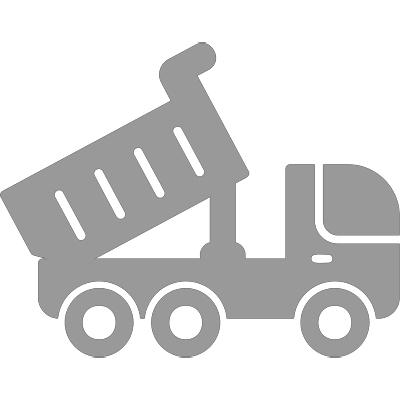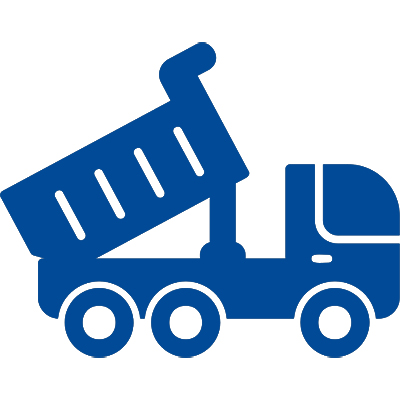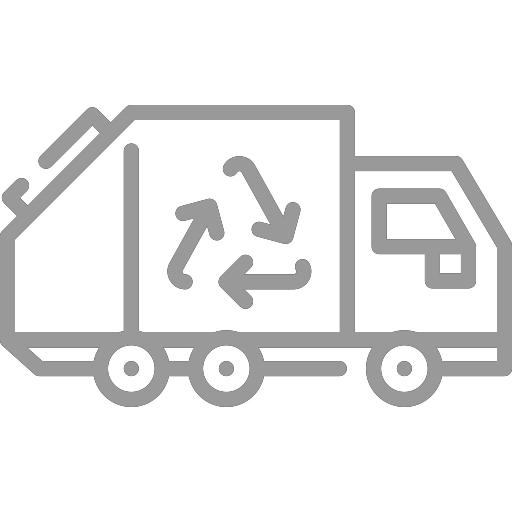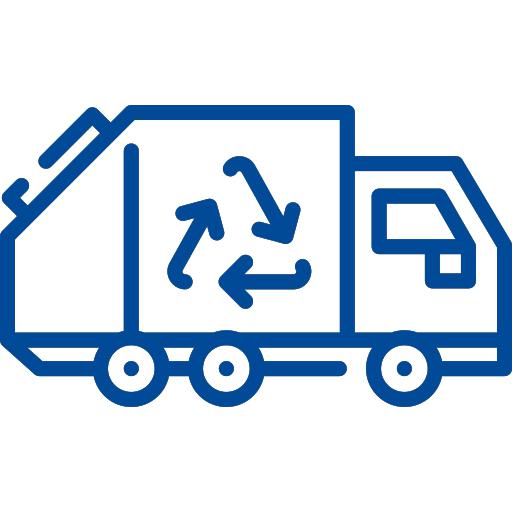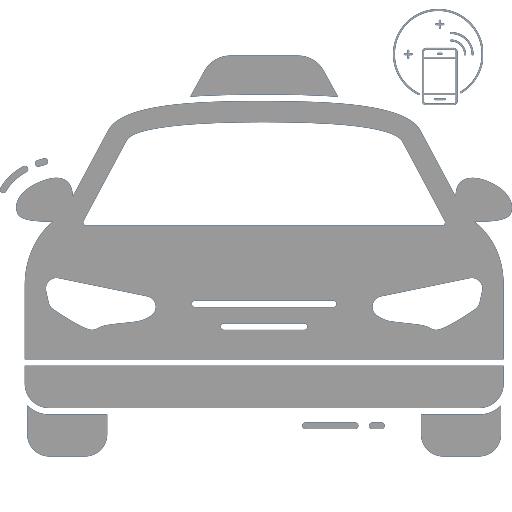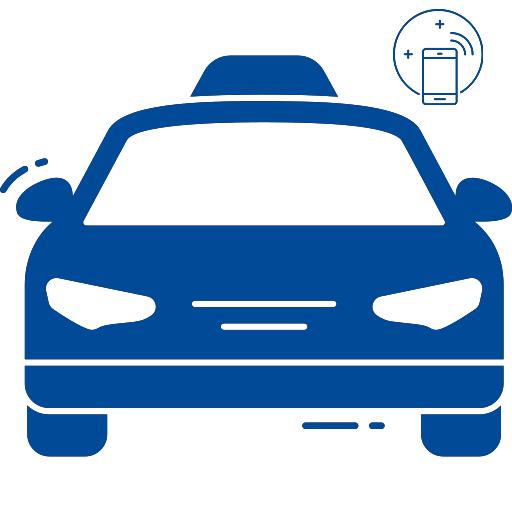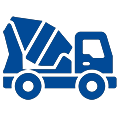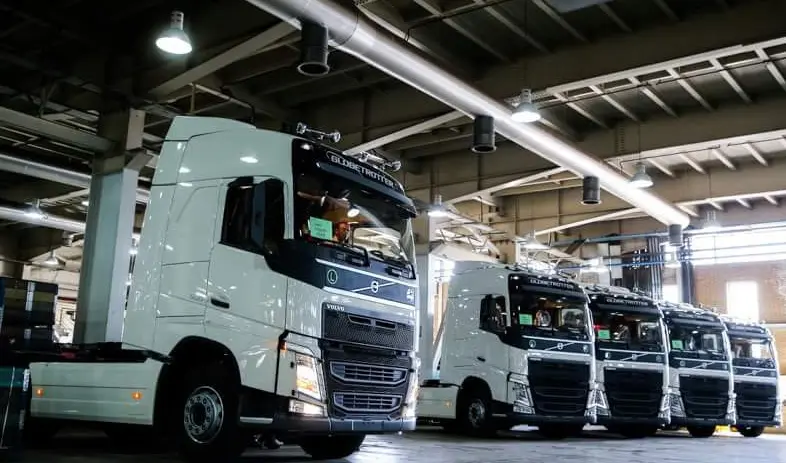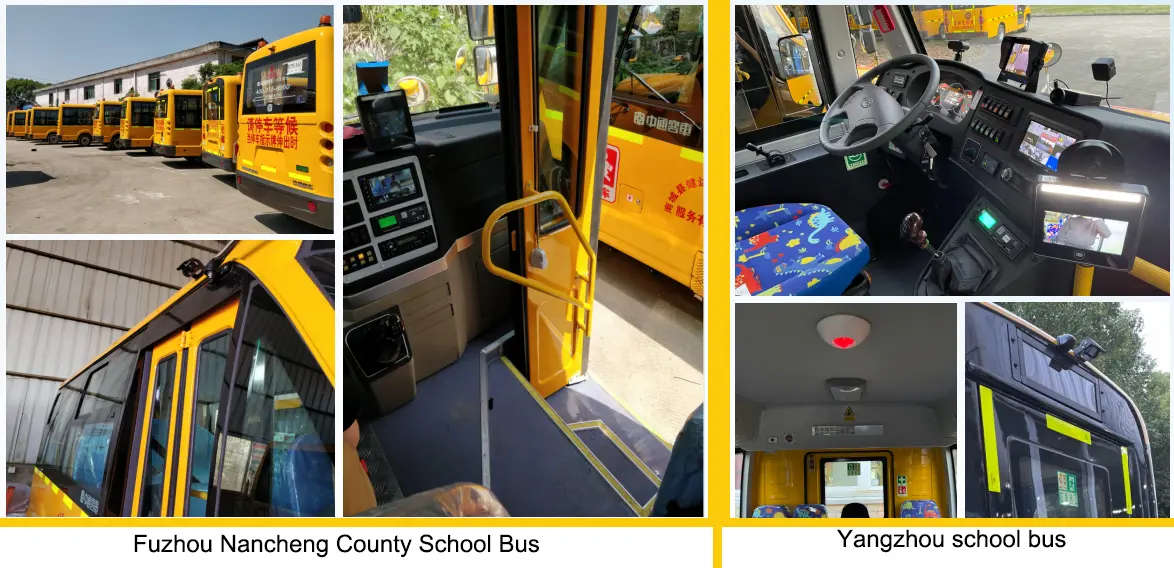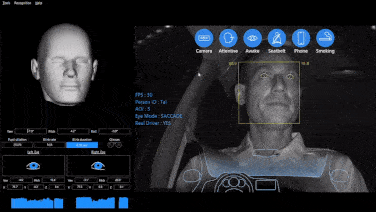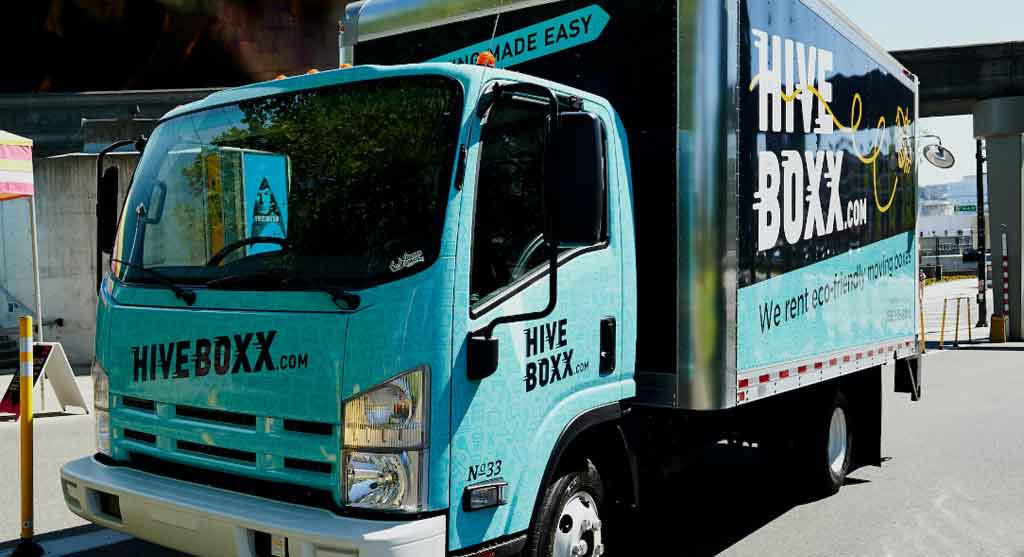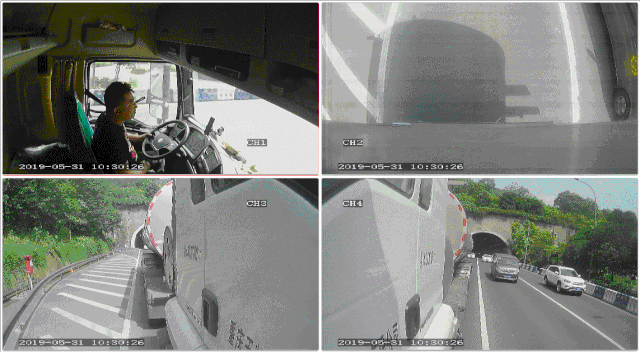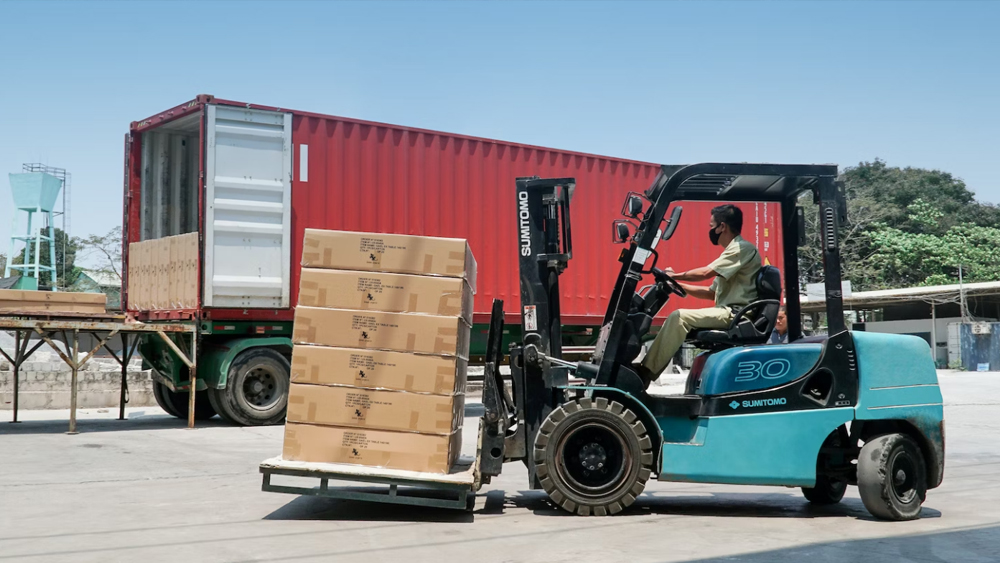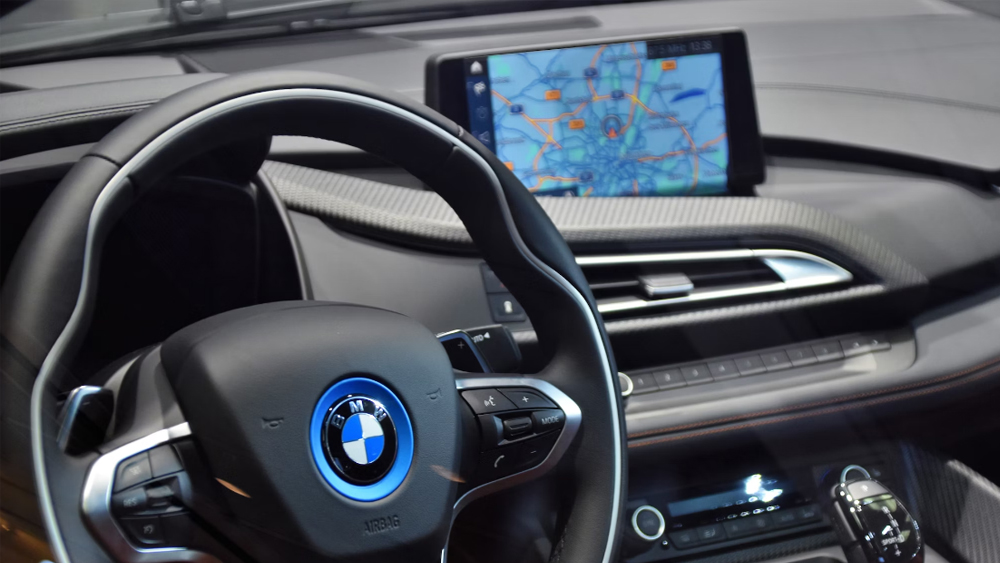Canada Taxi Camera System Solution
Number of taxis in Canada
In Canada, particularly in major cities such as Toronto, Vancouver, and Montreal, taxis are an essential part of urban transportation, providing convenient services to both residents and tourists. As urbanization accelerates and demand for tourism and local travel continues to rise, the taxi industry still plays an irreplaceable role.
It is estimated that by 2024, Canada will have more than 30,000 registered taxis across all provinces, with Ontario and British Columbia accounting for nearly half of the vehicles. Despite the rise of ride-hailing platforms, traditional taxis continue to play a key role in the urban transportation system, especially during peak hours, in remote areas, and for services requiring accessibility support for people with disabilities.

Canadian Taxi following challenges:
- Increasingly stringent industry regulations (e.g., ICBC insurance requirements, taxi safety standards, mandatory in-vehicle cameras).
- Inconsistent operational efficiency.
- Multiple safety incidents and disputes involving drivers, which affect the industry’s image.
- Difficulty balancing customer satisfaction and driver compliance management.
As a result, building an intelligent, efficient, safe, and compliant in-vehicle monitoring and dispatch system has become a common need for taxi operators, urban transportation management authorities, and industry regulators across Canada.
Demand Analysis
According to feedback from major taxi companies and drivers in Canada’s major cities, the industry urgently needs solutions for the following problems:

1. Lack of unified supervision and remote dispatch systems, unclear vehicle distribution, and slow dispatch response.
2. Difficulty in collecting evidence of driver violations, such as fare manipulation, detours, or private hires, which damage the interests of the company and passengers.
3. Incomplete collection of operational data, leading to inefficiencies in government statistics and enterprise performance evaluation.
4. Weak driver safety protection, with difficulty in documenting incidents like robberies or lost items.
5. Delayed handling of passenger complaints and non-standardized service quality evaluation processes.
6. Upgraded safety regulations requiring the installation of in-vehicle and external cameras with real-time recording systems.
7. Linguistic diversity and cultural differences making management and training more challenging.
8. Increased pressure for environmental sustainability, with the management system needing to support the integration of new energy vehicles.
9. The information system needs to support multilingual interfaces (e.g., English, French, Mandarin, etc.).
Taxi Camera System Overview
To meet the regulatory and operational needs of the Canadian taxi industry, YUWEI offers a locally compliant and highly customizable intelligent in-vehicle monitoring system solution (supporting 3G/4G/5G), consisting of three core components:
- Front-end in-vehicle intelligent monitoring system
- Mobile communication network
- Back-end cloud platform server/control center
The system supports API integration with local taxi fleet platforms (such as Beck Taxi, Yellow Cab Vancouver, Diamond Taxi Montreal) or independent deployment.
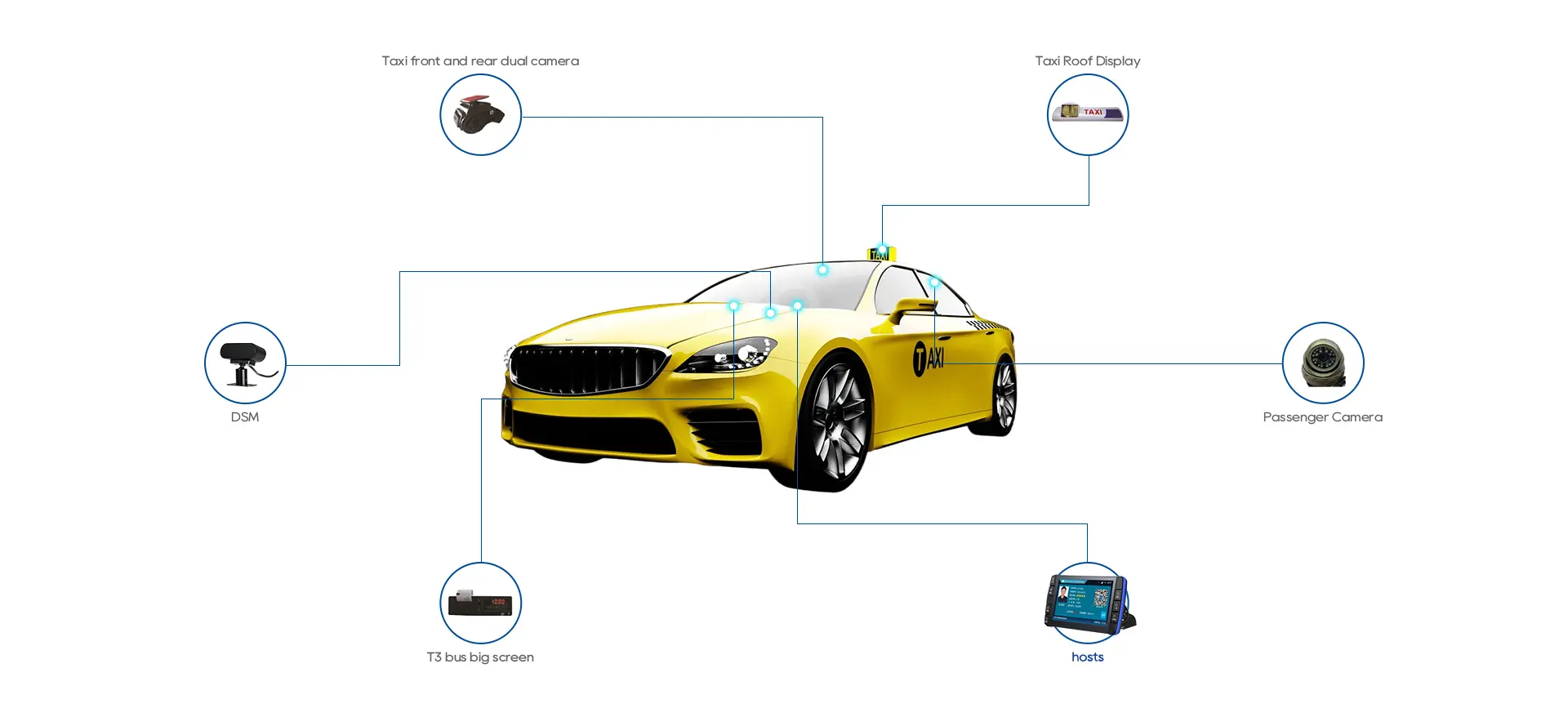
Taxi Camera Solution Details
A. Front-End In-Vehicle Monitoring System
The system integrates cameras, GPS positioning, alarm switches, intercom devices, LED advertising screens, and passenger service terminals, centrally managing data through the in-vehicle MDVR host.
Recommended camera deployment locations (in compliance with Canadian regulatory standards):
- Front-facing camera: Records driving processes, supports traffic accident reconstruction.
- Driver-side camera: Monitors driver behavior, preventing fare manipulation, phone usage, fatigue driving, etc.
- Rear passenger camera: Enhances passenger safety, assists in recovering lost items.
- Trunk/rear camera: Protects luggage, prevents theft.
Additional external devices include:
- SOS alarm button (supports bilingual prompts)
- Fatigue driving detection module (infrared eye-tracking technology)
- LED advertising screen (supports precise location-based advertising)
- Multilingual fare meter and service evaluation terminal
B. Communication Network (Supports Major Canadian Networks)
Data is transmitted in real-time and device management, upgrades, and alarm responses are handled via 3G/4G/5G networks from carriers such as Bell, Telus, and Rogers.
- Real-time upload of audio/video, GPS, and alarm data while the vehicle is in motion.
- Supports OTA remote updates and parameter configurations.
- Remote fuel/power cut-off control (for emergency use).
- Data is uploaded to the server.
C. Back-End Server/Cloud Monitoring Platform
Based on a centralized cloud platform, which is compatible with web browsers and mobile app clients (supporting English and French interfaces), management personnel can:
- Real-time video preview, snapshot capture, and historical playback.
- View vehicle distribution and driving trajectories.
- Alarm event location and linked on-site images.
- Support for multi-account permission management (headquarters, regional sites, driver personal centers).
- Advertising module allows for precise targeting by city, time, and holidays.
- Supports integration with government regulatory systems (e.g., municipal transportation department platforms).
Data Encryption and Compliance:
- Data transmission is encrypted (TLS/SSL).
- Storage nodes are located within Canada, in compliance with PIPEDA and local privacy protection regulations.
- Supports both local deployment and cloud service deployment.
Adaptation Scope
- Taxi companies, compliant fleet platforms, airport shuttle services, government official vehicles, and more.
More:Delivery Fleet Dash Cams | School Bus Video Surveillance | Dump Truck Camera Systems















